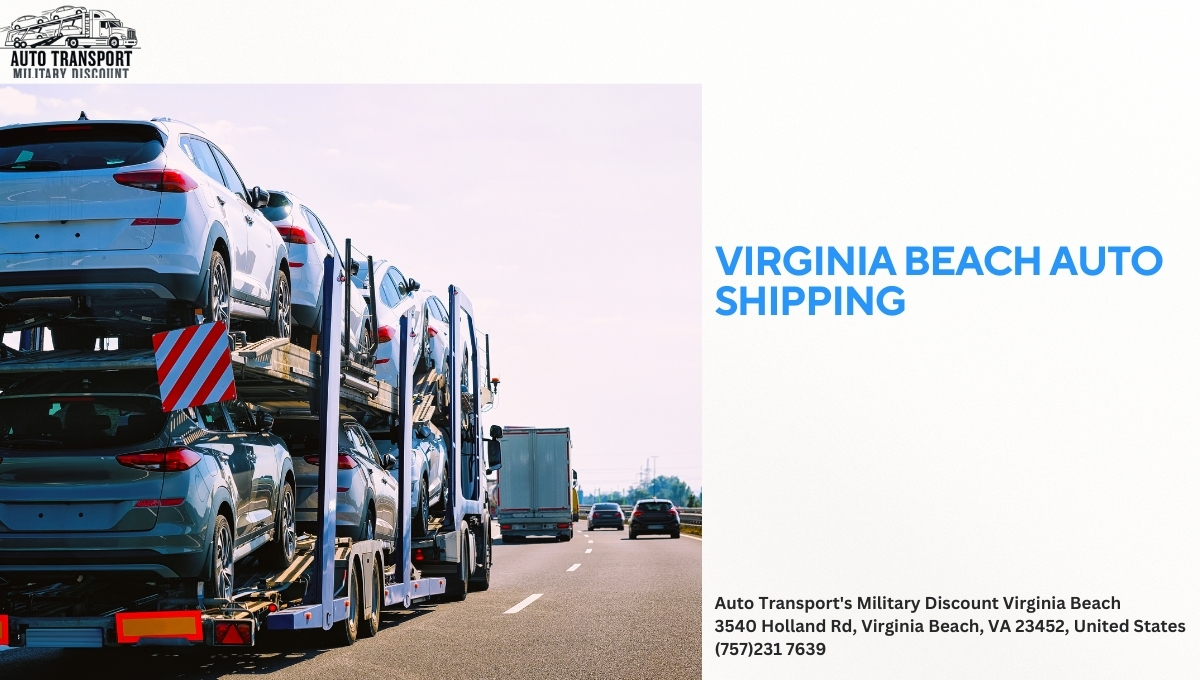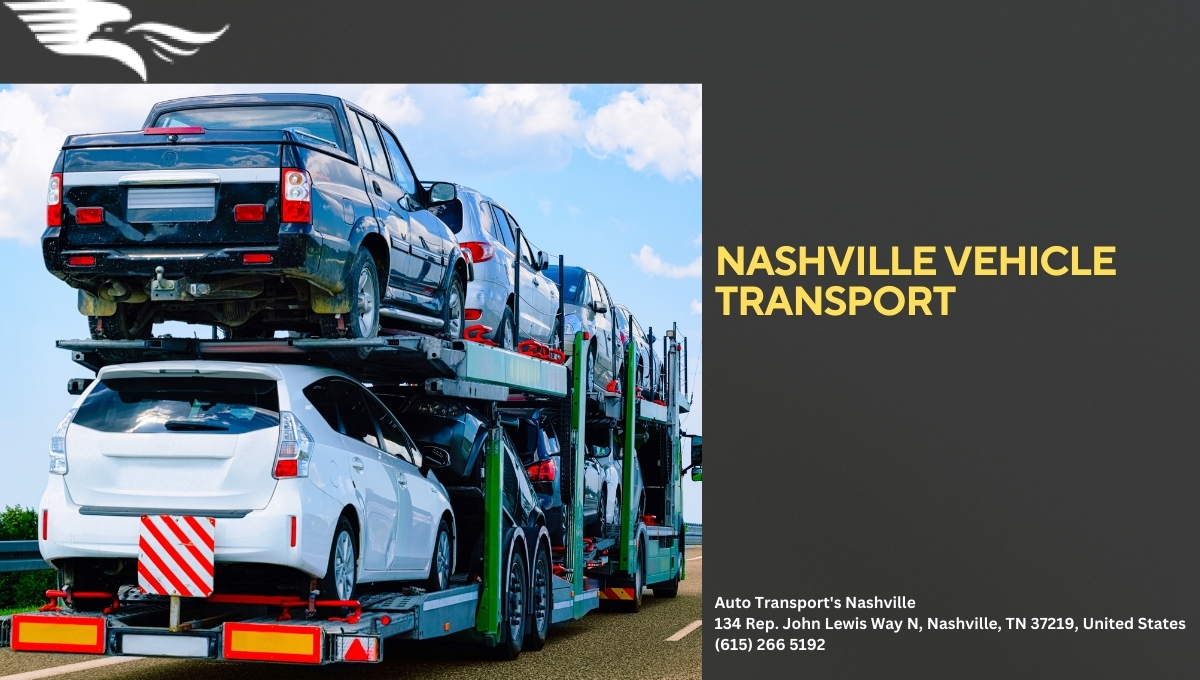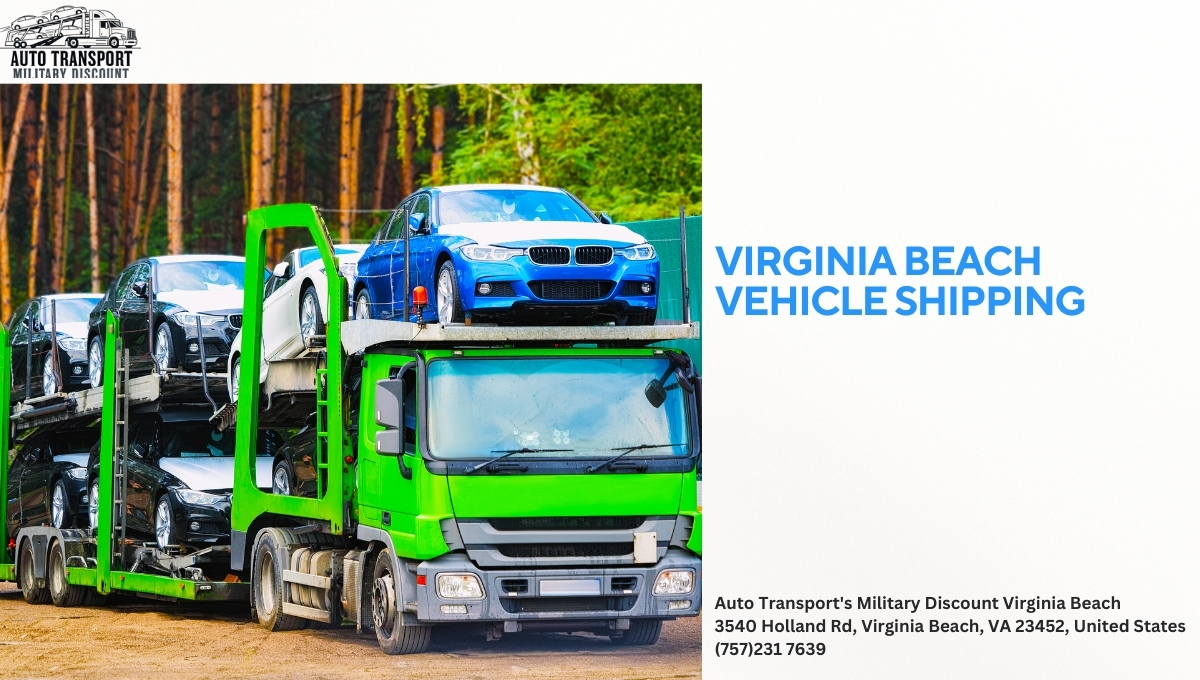Getting a vehicle in or out of Virginia Beach sounds straightforward until you hit the friction points: navigating Navy base schedules, timing around resort-season traffic, balancing bridge-tunnel bottlenecks, and coordinating with carriers who juggle Norfolk port runs and Outer Banks detours. The good news is that Virginia Beach car shipping can be smooth if you understand how the market works and plan around local realities. I’ve moved everything from daily drivers and lifted trucks to low-slung weekend cars through Hampton Roads, and the difference between a headache and a clean handoff usually comes down to preparation, communication, and timing.
Understand the lay of the land
Virginia Beach sits at the hinge of several logistics networks. Carriers stage along I-64 and I-264, feed loads through the Port of Virginia in Norfolk, and connect north-south traffic on US-13 and US-17. That makes the area busier than a typical beach town. If you’re booking Virginia Beach auto shipping during late spring through early fall, you’re competing with military relocations, college moves, and tourist-season deliveries. During hurricane season, carriers watch forecasts closely and sometimes pause routes across the Chesapeake Bay Bridge-Tunnel. Winter brings fewer storms but shorter daylight windows, and drivers prefer daylight for pickup and delivery photos.
Those rhythms affect price and availability. You can still ship a car year-round, but you may wait longer or pay more for rush timing during peak weeks, especially if you need enclosed transport or door-to-door service in a tight neighborhood near the oceanfront.
Choosing the right service for your vehicle and route
Most people use open transport because it’s the industry workhorse. Open carriers handle 7 to 10 vehicles at a time, they run frequent routes, and they cost less. For a recent-model commuter car or SUV, open transport is usually the sweet spot. If you have something sensitive — a classic, a new EV with low ground clearance, or a high-value import — enclosed transport reduces exposure to salt air, road grit, and sudden coastal squalls. Enclosed trailers typically cost 30 to 60 percent more than open, with spread depending on distance and route popularity.
Short hops, like Virginia Beach to Richmond or Raleigh, stay competitive and move quickly since carriers can bundle multiple pickups along I-64 and I-95. Long hauls to Texas or the Rockies move best when you give carriers flexibility on pickup dates. Routes to the Northeast are plentiful but watch for bridge and toll restrictions that limit trailer sizes in certain urban corridors, which can slow pickup scheduling.
If you live near the oceanfront, Sandbridge, or First Colonial Road areas with tight streets or HOA restrictions, consider meeting a carrier at a nearby big-box parking lot or a wide intersection with a yield lane. A 75-foot rig isn’t squeezing into a cul-de-sac bordered by parked cars and ornate mailboxes. Good carriers will suggest safe, legal meeting points and will never pressure a risky maneuver.
What influences cost in Virginia Beach vehicle shipping
Rates are dynamic. Brokers post your job on national load boards, and carriers accept when price, timing, and route align. Virginia Beach vehicle transport pricing reflects:
- Seasonality and local events. Summer tourist traffic and PCS season spike demand. Expect a premium of 10 to 25 percent compared with late fall. Trailer type. Enclosed costs more than open. Single-car hotshot service commands a premium when you need precise timing. Pickup and delivery specifics. Tight time windows, hard-to-reach neighborhoods, and restricted zones add to the rate. Military base access may require staging outside the gate. Vehicle size and condition. Oversize tires, lift kits, non-running vehicles, or cars without brakes require specialized loading and raise the price. Flexibility. A two- to three-day pickup window can save meaningful money compared with a same-day or next-day requirement.
For context, East Coast corridor shipments for standard sedans commonly land in the low to mid hundreds for short routes and climb into the four figures for cross-country moves. Enclosed transport adds a significant bump. If a quote looks far below the pack, ask yourself what was left out: realistic pickup dates, fuel surcharges, or the understanding that the broker may need to repost higher later.
Broker vs. carrier in plain terms
In this market, you will usually work with a broker, even if their website looks like a carrier’s. Brokers post your job to carrier networks, vet drivers, and coordinate paperwork. Carriers own the trucks and do the driving. A good broker earns their fee by matching your specifics to carriers who actually run Virginia Beach routes and by solving the snags that crop up at pickup and delivery.
A true carrier with its own fleet may be ideal if your route is common and your timing flexible. The trade-off is fleet capacity. If their trucks are full or on the wrong side of the state, you wait. Brokers give you reach, but vet them. Ask directly how they handle increases if the initial offer doesn’t attract a carrier, whether they use a signed dispatch sheet before taking a deposit, and how they vet insurance. Clarity upfront saves frustration later.
Timing shipments around Virginia Beach’s quirks
Traffic is one thing; infrastructure is another. The Hampton Roads Bridge-Tunnel and the Monitor-Merrimac Memorial Bridge-Tunnel both create daily choke points. A driver who says they will arrive between noon and 3 p.m. might lose an hour to a stalled box truck in a tunnel. Summer afternoons bring scattered storms that drivers prefer to avoid while loading, especially for low cars that need ramps and careful angles. Build a cushion into your day.

Base access can add time. If your pickup or drop is affiliated with NAS Oceana, Little Creek, or Dam Neck, confirm gate procedures. Most carriers cannot drive onto base without prior clearance. The usual approach is to meet just outside a designated gate in a visible, safe parking lot. Expect to show ID and allow a few extra minutes for coordination calls.
Preparing your car so loading goes quickly
Preparation cuts billable delays and protects you if a claim arises. I’ve watched pickups stretch an extra 45 minutes because a spare set of keys was missing or the trunk was stacked with loose items. The driver’s schedule tightens, and the load order for vehicles above yours gets complex. A clean, ready car keeps your shipment on schedule.
Short checklist to streamline pickup:
- Wash the exterior lightly so you can spot and document existing marks. Remove personal items and toll tags. Loose objects can shift or be flagged by the carrier. Set tire pressures to spec and top off fluids, but keep fuel under a quarter tank for weight and safety. Photograph all sides, wheels, glass, and interior before the driver arrives, with timestamps. Provide a spare key, the alarm code if needed, and note any quirks like a sticky hood release.
If the vehicle doesn’t run, tell your broker early. A non-op car can still ship on a winch-equipped trailer, but it changes the pricing and requires a slot that allows for extra loading time. If the brakes are out or the steering doesn’t work, that’s another level of complexity entirely and needs to be stated plainly.

Insurance that actually protects you
Carriers carry liability and cargo insurance, and brokers should verify it. Ask for the carrier’s certificate of insurance before dispatch, and check coverage limits. Many policies show cargo coverage in the $100,000 to $250,000 range for the entire load. That usually covers standard vehicles, but if you’re shipping a high-value car, confirm whether the policy is per vehicle or aggregate. If it’s aggregate, ask how they handle multiple claims arising from one event.
Consider your own policy. Some personal auto policies extend coverage during transport, many do not. If you have a collector policy, read the fine print on transport. For extra assurance, some owners buy a short-term rider that specifically covers their car from pickup to delivery. It’s not always necessary, but when a car’s value clearly exceeds a carrier’s published limits, the rider can be cheap peace of mind.
During pickup and drop-off, the bill of lading is your record. Walk the car with the driver and mark any blemishes clearly. Use your phone to take photos as the driver takes theirs. At delivery, do the same walkaround in daylight if possible. If you see damage, note it on the bill of lading before you sign. Handshakes and verbal assurances don’t initiate a claim; written notes do.
Communication habits that keep the process calm
The best Virginia Beach car transport experiences I’ve seen shared three traits: realistic pickup windows, quick responses to driver updates, and one point of contact who can make decisions. If you hand off contacts between roommates, property managers, and spouses with different schedules, something gets missed.
Carriers prefer a pickup window rather than a fixed hour because traffic, earlier appointments, and DOT rest rules create variability. If you must hit a hard window, say so early and expect to pay more or meet at a location with easy access. Provide two phone numbers and make sure at least one can receive text messages with location updates and photos.
It’s standard for a driver to call a few hours out with an ETA, then again 30 to 60 minutes before arrival. Answering those calls prevents the driver from idling at the curb, burning daylight, and reordering their load plan. Missed calls often lead to rescheduling and storage fees, especially if the truck has to keep moving to the next appointment.
How to compare quotes without getting whipsawed
Quotes in this industry can feel like a moving target. If you post a shipment, you may get a spread that looks too wide to be useful. Distill it by focusing on three things: realism, clarity about who pays what and when, and the carrier’s likelihood of actually accepting the job at the quoted rate.

A broker who consistently works Hampton Roads should speak confidently about pickup corridors like Lynnhaven, Kempsville, or Hilltop and about common meeting spots for long rigs. They should also mention timing factors like weekend beach traffic or the effect of a festival near the oceanfront. Vague responses often correlate with underpriced postings that get bumped later.
Ask whether the quote includes all fees, what triggers a rate change, and whether deposits are refundable if the pickup window passes without dispatch. Keep an eye out for low-ball offers paired with large upfront deposits. In most cases, a modest deposit at dispatch and the remainder on delivery is standard. Paying in full upfront removes leverage if the schedule slips.
Military moves and PCS specifics
Virginia Beach is a military town. If your move is tied to PCS orders, you’ve got extra considerations. Start early, ideally Virginia Beach vehicle shipping Auto Transport's Military Discount Virginia Beach four to six weeks before your target date. Base housing checkouts, HHG pickups, and vehicle handoffs all converge, and carriers book out fast. Shipping a POV through the government-approved channel is different from hiring a private carrier, and each path has pros and cons. Private carriers give you schedule control, but you pay out of pocket and claim reimbursement if eligible. Government channels offer cost coverage but can have stricter timelines.
When working privately, tell your broker if the pickup needs to stage at a gate, and specify which one. Send a pin drop of the meeting point and photos if the area is tricky. Carriers appreciate precision, and you avoid back-and-forth on the day of.
EVs, lifted trucks, and low cars
Special vehicle profiles change the equation. EVs demand attention to state of charge and transport protocols. Most carriers ask for 30 to 50 percent SOC to allow a few loading cycles without risking a shutdown. Provide the charging adapter in a labeled bag if the destination is rural or if the driver needs to reposition the vehicle at delivery.
Lifted trucks with wide tires or aftermarket bumpers may require a lower deck position due to height, and oversized tires can complicate tie-down points. Share dimensions, especially total height. Many states cap combined trailer heights around 13 feet 6 inches, and a tall truck on the top rack can push limits.
Low-clearance cars often benefit from enclosed transport or a carrier that carries race ramps. If the front lip sits under five inches, tell the broker. I have watched drivers improvise with wood planks, which works in a pinch but isn’t ideal. A carrier who shows up with proper ramp extensions reduces risk of scraping and speeds loading.
Pickup and delivery sites that actually work
Apartment complexes near the oceanfront, narrow residential streets in Shadowlawn, and HOA-managed communities in Red Mill can be tight. If there’s any doubt, propose a nearby commercial lot with clear ingress and egress. Big-box parking lots, park-and-ride locations close to I-264, or wide frontage roads by shopping centers are common meeting points. Confirm with property management if needed. Carriers are careful about trespass and prefer not to load under low signage or power lines.
For delivery, try to arrive with a flexible window and daylight if possible. If you’re flying into Norfolk International and plan to meet the driver directly from the airport, leave room in your schedule. Flights delay, and drivers’ hours of service limit how long they can wait. A backup contact who can accept delivery prevents overnight storage or redelivery charges.
Weather and coastal conditions
Coastal Virginia has quick-shift weather. Storm cells can open in minutes, and wind gusts pick up around the bridges. Drivers monitor conditions and occasionally pause loading to avoid slippery ramps. If your schedule is tight, check the forecast and have a plan to wait out a squall or pivot to a nearby sheltered spot. Salt air is real along the oceanfront; if you choose open transport and your car arrives with a fine mist residue, a gentle wash takes care of it.
Hurricane watches trigger more dramatic adjustments. Carriers may reroute inland or suspend new pickups until the track clears. If you’re moving in late summer or early fall, keep a flexible mindset during active systems. A 24-hour shift can save you a week-long delay if roads close.
Payment, paperwork, and avoiding common pitfalls
The bill of lading governs the condition and terms, and it follows the car. Read it. Make sure the VIN and odometer roughly match your records. Note accessories like roof racks or spoilers. If your car has a toll transponder, remove it or ensure it’s shielded; passing under toll readers on a trailer has triggered surprise charges in the past.
Most carriers accept certified funds, Zelle, or cashier’s checks at delivery, with credit cards often processed through the broker during booking or as a deposit. Clarify payment splits to avoid awkward curbside conversations. If someone on your behalf will hand off the vehicle, give them written instructions about payment, signatures, and condition notes. They should know to mark any issues before signing, not after the truck pulls away.
A common pitfall is packing household goods in the car. Industry rules and insurance policies discourage or prohibit it, and the DOT can fine carriers for hauling household items without proper authority. A jacket in the trunk usually passes without comment; 150 pounds of boxes does not. If you must ship a few small items, ask in advance and keep it minimal and below window line.
When timing is tight: expedited and last-mile tactics
Life happens. Maybe your closing date moved up or your deployment orders changed. Expedited service exists, but it costs more and doesn’t guarantee a specific hour. The lever you can pull is attractiveness to carriers: flexible meeting points near major arteries, vehicle ready to go, paperwork complete, and a rate that beats competing loads on the same corridor. Brokers will sometimes pair you with a hotshot — a one- or two-car trailer — which can thread tight streets and make surgical pickups at odd hours. It’s the right tool when the schedule is the priority.
For the final handoff, think last-mile. If your destination is a dense urban area with parking restrictions, coordinate a delivery point outside the congestion. I’ve had excellent luck meeting at fuel stations with wide lots or service roads parallel to interstates. A ten-minute drive on your end can save an hour of headache on theirs, keeping the schedule intact for everyone.
A simple framework for stress-free Virginia Beach car transport
- Start early and request quotes from providers with real Hampton Roads experience, then compare for realism and clarity. Pick the right trailer type based on vehicle and risk tolerance, factoring season and route. Prepare the vehicle thoroughly, document condition, and keep fuel and cargo light. Communicate with a single decision-maker, provide flexible meeting points, and answer driver updates. Verify insurance details, understand payment terms, and use the bill of lading diligently at both ends.
Virginia Beach vehicle shipping doesn’t need to be a leap of faith. When you align your expectations with local conditions — the tunnels, the base gates, the seasonal crowding, the sudden weather — you give drivers what they need to do their work cleanly. That respect tends to be reciprocated in the small ways that count: precise ETAs, careful loading angles, a few extra photos, and honest answers if the timeline shifts.
The best outcomes I’ve seen have all felt like teamwork. You handle the preparation and communication, they handle the steel and miles, and the car arrives looking exactly like the photos you took before it rolled onto the trailer. If you hit a snag, bring it up early. Virginia Beach car transport professionals navigate these routes every day, and they know the alternatives that tuck around the bottlenecks and weather breaks. With a clear plan and a bit of flexibility, your Virginia Beach vehicle shipping can be just another smooth step in your move rather than the part you dread.